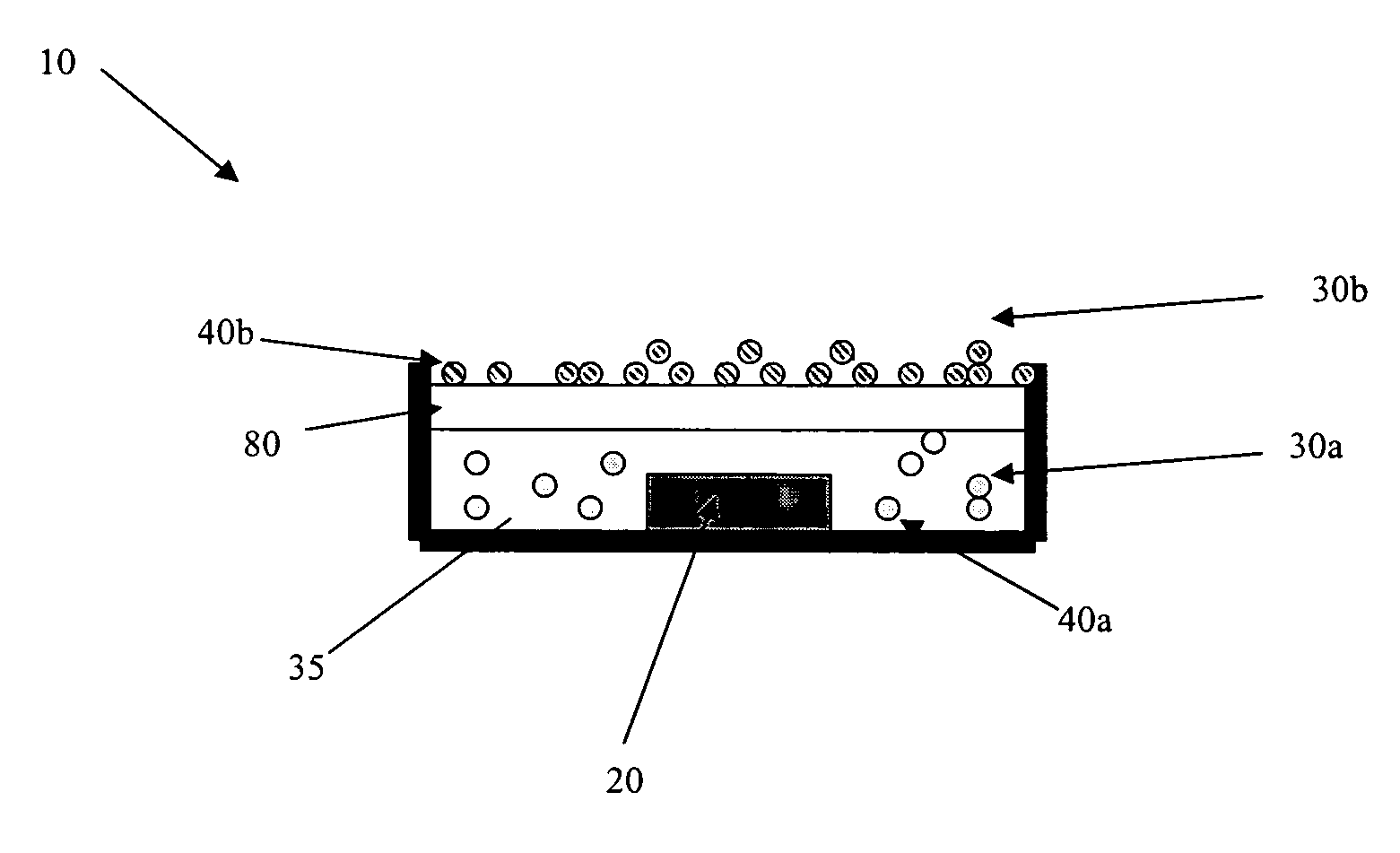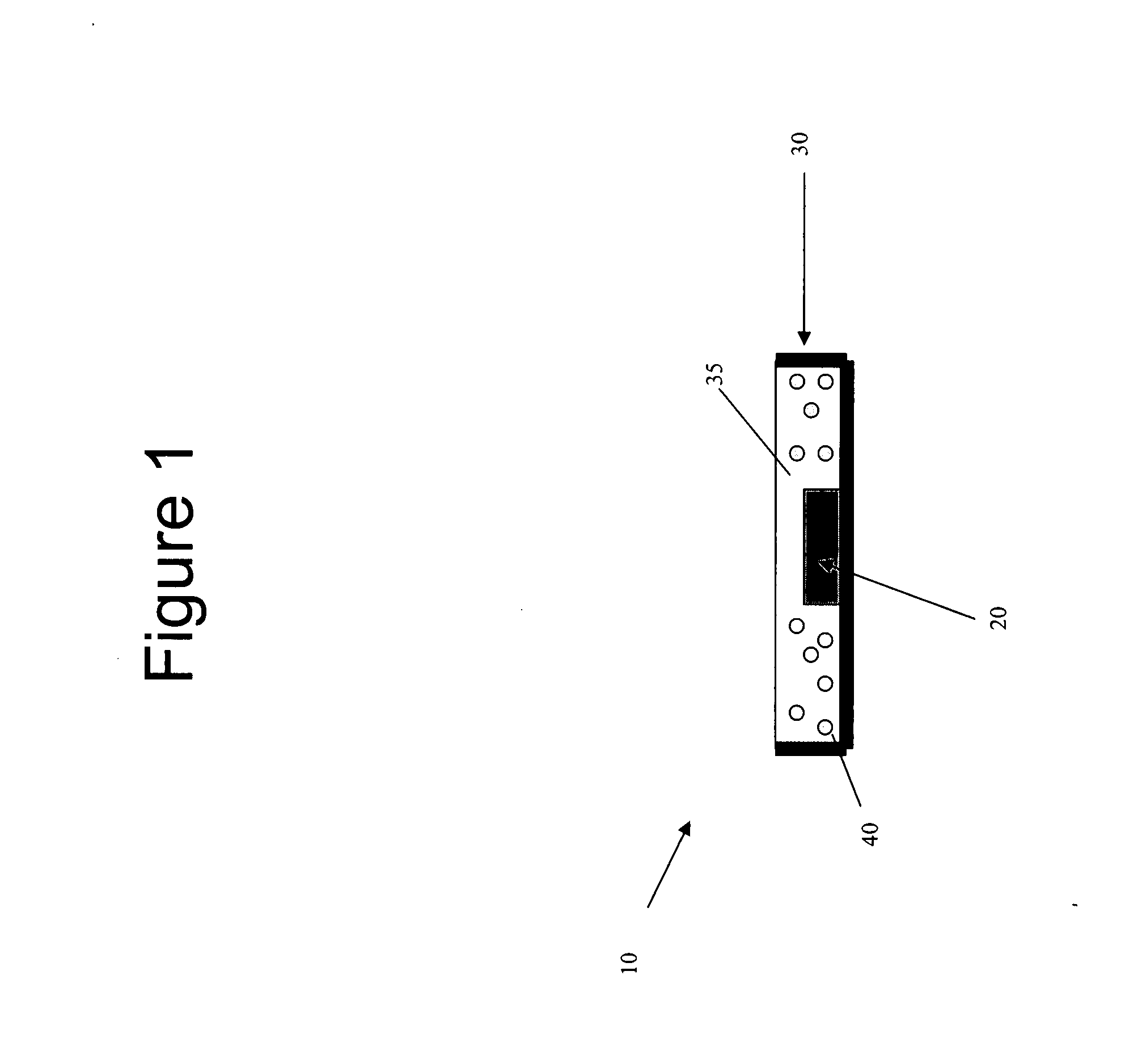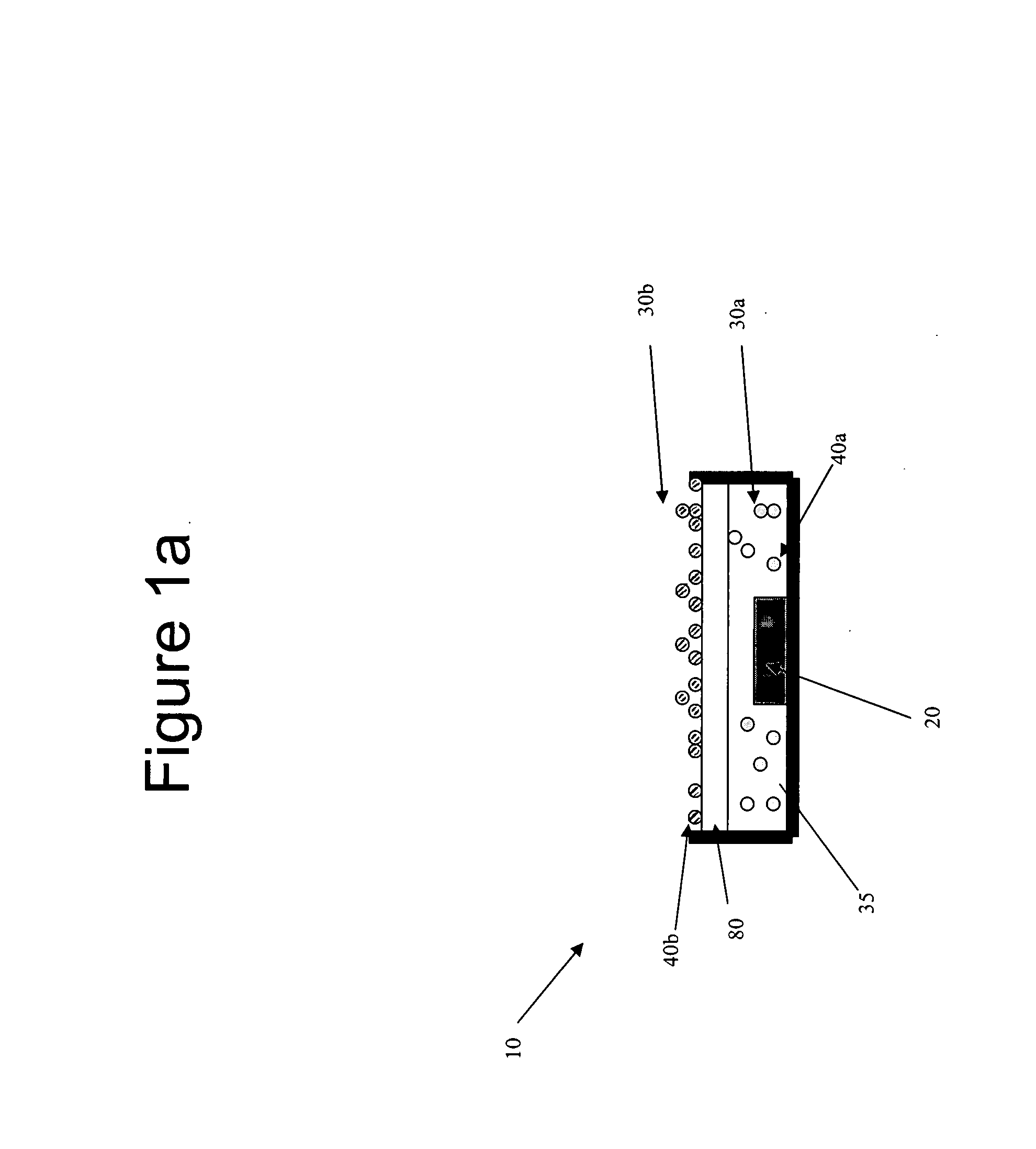Solid state lighting devices comprising quantum dots
a lighting device and quantum technology, applied in the direction of discharge tube luminescent screen, discharge tube/lamp details, luminescent composition, etc., can solve the problems of low color rendering index—cri, nm light, poor color quality of white light made in this way,
- Summary
- Abstract
- Description
- Claims
- Application Information
AI Technical Summary
Problems solved by technology
Method used
Image
Examples
example 1
Various Active Layer Locations in Device
[0054]FIG. 5 illustrates the relationship between the distance between the light source and the active layer and the intensity of the light emitted by a solid state lighting device according to an embodiment of the present invention. In this example, three solid state lighting devices were fabricated with reference to the solid state lighting device illustrated in FIG. 4, the devices having different volumes of the second matrix material forming the first encapsulant layers (50) deposited on the active layers (30), thereby providing different distances between the active layers (30) and the light sources (20).
[0055]Here, the devices were fabricated on low power SMD-type LED chips, such as those LED chips produced by Knowledge-On Inc. The Knowledge-On LED chip has the form factors with 2.4 mm in diameter and about 1 mm in depth and surrounded by a white plastic cup. OP-54 (Dymax), a UV curable polyurethane acrylate, was used as the second matri...
example 2
Green Light-Emitting Quantum Dots with Blue Light Source
[0059]FIG. 6 illustrates the spectral response of a solid state lighting device according to an embodiment of the present invention when emitting green light from the quantum dots and having a blue light source. In this example, a green LED was fabricated with reference to the device of FIG. 4. A UV-curable silicone matrix material was used for the active layer (30), the first encapsulant layer (50), and the second encapsulant layer (60). The delivered volumes of matrix material for the layers were 2.0, 1.5, and 8 μl, respectively. To form the active layer, a mixture of 20% methyl hexahydrophthalic anhydride (MHHPA) and 80% silicone matrix material was embedded with 10 mg / ml of CdSe quantum dots. The spectral power density of the green LED was then measured.
[0060]Quantum yield is defined as a fraction of the number of quantum dot complex photons coming out of the number of absorbed photons, which is measured with very dilute co...
example 3
White Light-Emitting Quantum Dots with Blue Light Source
[0063]FIG. 7 illustrates the spectral response of a solid state lighting device according to an embodiment of the present invention when emitting white light from quantum dots and having a blue light source. Here, a white LED was fabricated with reference to the device of FIG. 4. A UV curable resin OP-54 was used for the active layer (30), the first encapsulant layer (50) and the second encapsulant layer (60). For the active layer (30), two CdSe quantum dot complexes, green and red light-emitting quantum dots, were mixed in toluene solvent with concentrations of 10 mg / ml for green and 1.3 mg / ml for red light-emitting quantum dot complex. 0.45 μl of the quantum dot solution in toluene was directly delivered on a first matrix material (35) of the active layer (30) without solvating the quantum dots in the first matrix material (35). After deposition of the active layer (30) on the first encapsulant layer (50), the device was drie...
PUM
 Login to View More
Login to View More Abstract
Description
Claims
Application Information
 Login to View More
Login to View More - R&D
- Intellectual Property
- Life Sciences
- Materials
- Tech Scout
- Unparalleled Data Quality
- Higher Quality Content
- 60% Fewer Hallucinations
Browse by: Latest US Patents, China's latest patents, Technical Efficacy Thesaurus, Application Domain, Technology Topic, Popular Technical Reports.
© 2025 PatSnap. All rights reserved.Legal|Privacy policy|Modern Slavery Act Transparency Statement|Sitemap|About US| Contact US: help@patsnap.com



